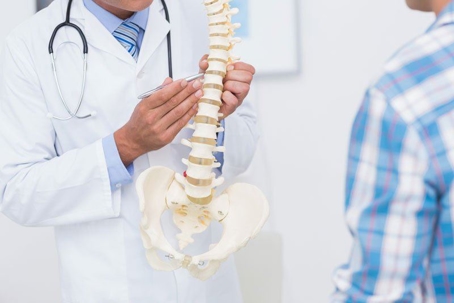
The pain doesn’t follow the usual pattern anymore
Some mornings feel heavier than others. Your back doesn’t just ache—it holds you still. You move differently without noticing. You shift in chairs more often. Your walk shortens. Lifting bags becomes unpredictable. Stairs are slower now. You tell yourself it’s temporary, but time keeps passing.
You move differently without noticing
There’s no sudden injury. Just quiet stiffness growing each week. Your body avoids bending left. Sitting too long triggers tension. Stretching doesn’t help as much anymore. You sleep in odd positions. Pillows shift all night. What used to relax you now brings discomfort.
Stretching doesn’t help as much anymore
The yoga video you trusted now feels foreign. Familiar poses cause dull pressure. Your spine resists instead of releasing. Gentle movements feel forced. Even walking loses its rhythm. You rest more, hoping to recover. But recovery doesn’t arrive like it used to.
You rest more, hoping to recover
Days off don’t reset anything. Naps just bring new soreness. Ice packs offer short relief. Heat helps, but not for long. You wonder if posture’s the problem. Or your mattress. Still, nothing explains why the pain grows slowly, without warning.
Nothing explains why the pain grows slowly
You check your chair. Adjust your shoes. Reduce screen time. But something deeper feels off. The pain spreads from lower back to hips. Sometimes it shoots down your legs. Standing still becomes harder than walking. You stop noticing how often you sit.
The pain spreads from lower back to hips
It changes your mood. You’re tired without reason. You avoid plans. Sleep becomes interrupted. You stop lifting heavy things. The gym feels unreachable. You don’t remember when this started. But it’s clear now—this isn’t passing. It’s settling in.
You stop lifting heavy things
Fear sneaks in quietly. You second-guess movements. Reaching overhead becomes cautious. Gardening feels risky. You give up long walks. Back pain shrinks your world. And the people around you rarely notice. You hide it well.
Back pain shrinks your world
Conversations change. You answer invitations with maybe. You look for chairs with support. Travel seems like too much effort. Pain changes your pace. You don’t run for the train anymore. You pause more than you move. Comfort becomes your priority.
You don’t run for the train anymore
There’s a moment you realize things aren’t improving. Painkillers work less. Your body grows tense before sleep. You Google symptoms too often. You try to wait it out. But the waiting leads nowhere.
You try to wait it out
Weeks become months. Pain stays constant. Home remedies blur together. Foam rollers. Hot baths. TENS devices. Supplements. They bring temporary shifts, not real change. Hope begins to thin out.
They bring temporary shifts, not real change
You start wondering about help. But not from your usual doctor. Something tells you this needs more. A different kind of look. A specialist’s hands. Someone who doesn’t guess. Someone who sees backs every day.
A different kind of look
An orthopedic specialist focuses on bones, joints, discs, muscles—together, not separately. They check structure, not just symptoms. Imaging becomes useful. They ask the right questions. Sometimes, it’s a disc. Sometimes, a nerve. Other times, alignment. It’s rarely just one thing.
They ask the right questions
You realize how long you’ve adapted to pain. Your walk has changed. Your posture, too. You sit differently at meals. Your breath shallows. Tension moves up your spine. An orthopedic eye catches these things. Early. Before damage deepens.
You sit differently at meals
Referral isn’t always needed. Some clinics welcome you without one. You don’t have to wait. And you don’t have to guess anymore. Specialists don’t assume. They investigate.
You don’t have to wait
Surgery isn’t the first option. It rarely is. Most treatment starts small. Guided exercises. Posture retraining. Physical therapy. Sometimes bracing. Other times injections. Plans are tailored, not copied.
Most treatment starts small
The sooner you start, the simpler the plan. Chronic pain rewires the body. Waiting complicates healing. Muscles compensate. Joints lock. Alignment shifts. Sooner means better chances. Less pain, shorter recovery.
Waiting complicates healing
It’s not about dramatic injury. It’s about knowing when discomfort stops making sense. When your back becomes a barrier. When your habits revolve around pain. Then, it’s time.
